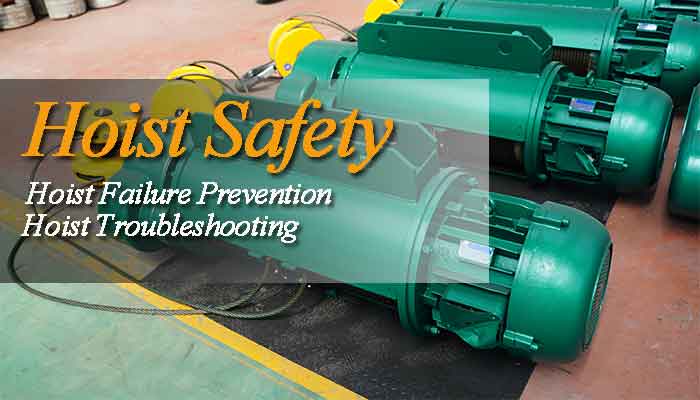
Types of Hoists Breakdown Prevention & Troubleshooting
How to prevent hoist breakdown? What's the solution for electric chain hoist, leaver hoist & chain fall hoist failures? Check hoist failure prevention & troubleshooting list now.
Types of Hoists Breakdown Prevention & Troubleshooting
How to prevent hoist breakdown? What's the solution for electric chain hoist, leaver hoist & chain fall hoist failures? All about hoist failure prevention & hoist troubleshooting list you want to know is presented for your reference. If you have any question or doubt, please feel free to contact us.
How to prevent your hoist from breakdown?
Is an overhead hoist used in your production? What would happen if that equipment broke down unexpectedly? The failure of a critical hoist means that production is halted in far too many processes.
Overhead material handling equipment, like any mechanical device, requires routine maintenance and, even then, may experience a breakdown. Here are some ways to help you prepare for the circumstance ahead of time.
1.Preventative Maintenance.Contract for a monthly walk-through in addition to having your hoists and cranes examined by a competent person once a year. Catch minor issues early on, before they become major issues, and address them as soon as possible. Don't be the end user who lets the hoist run till it breaks. This lack of planning will result in manufacturing delays, overnight part shipments, and costly emergency service labor.
2.Keep Spare Parts On Hand. Return to the distributor and request a manufacturer-recommended spare parts list for each hoist. Motor and control fuses, transformers, hoist contactors, trolley contactors, push button stations, and hoist safety latches should all be kept on the shelf. Keep a spare wire rope assembly, as well as motor drake discs and motor brake coils, on stock if you have a manufacturing wire rope hoist.
3.Buy a Hoist That's Easy to Maintain. Certain manufactures are recommended for their dependability and ease of maintenance. Electrolift, ACCO, and the Yale Cable King are wire rope hoists. Coffing and Harrington are two brands of electric chain hoists. The CM Cyclone (domestic) and All Material Handling (commercial) are two manual chain hoists (imported).
4.Have an Emergency Plan.Even well-maintained equipment can go down from time to time. Designate employees (not just one person) who will be in charge of the problem and give them authority to act. Find the source of the issue and devise a strategy of action. Inquire about which parts have failed and whether they are available. Keep the phone number of your local hoist firm handy.
5.Purchase a Duplicate Back-Up Hoist. WThis was not in the original budget, as far as I know. But what would be lost if manufacturing was halted due to this machinery? Having a backup hoist on hand means that you can get back up and running quickly with minimal downtime.

Fixed Type Wire Rope Hoist
- Lifting Capacity:0.25t to 50t
- Lifting Height: 3m to 100m
- Lifting Speed: 0.33~8,Single or Dual Speed
- Working Class: M3, M4
- Ambient Temperature: -20℃ to 40℃

Travelling Wire Rope Hoist
- Lifting Capacity:0.25t to 50t
- Lifting Height: 3m to 100m
- Lifting Speed: 0.33~8,Single or Dual Speed
- Working Class: M3, M4
- Ambient Temperature: -20℃ to 40℃

Double girder hoist crane
- Lifting Capacity:0.25t to 50 ton
- Lifting Height: 3m to 100m
- Lifting Speed: 0.33~8,Single or Dual Speed
- Working Class: M3, M4
- Ambient Temperature: -20℃ to 40℃

Single girder hoist crane
- Lifting Capacity:0.25 ton to 50 ton
- Lifting Height: 3m to 100m
- Lifting Speed: 0.33~8,Single or Dual Speed
- Working Class: M3, M4
- Ambient Temperature: -20℃ to 40℃
Troubleshooting of Electric Chain Hoists, Lever Hoists and Chain Fall Hoists
Please find a list of potential causes and solutions for all types of hoists below. This guide is just meant to be used as a guide. Always refer to the owner's handbook that came with your hoist for precise instructions on how to use your hoist.
Locked-up hoist load brake (handle works in "UP" but not "DOWN" direction).
Possible cause: After using a hoist to lift the load, the load was not dropped.
Unlock the load brake as a possible solution.
The brake on the hoist load slips (hoist will not support loads).
(i)Oil-coated brake friction surfaces or glazed friction washers are possible causes. (ii) Damaged or worn brake parts. (iii) Load chain installed in the wrong direction.
Optional Solution: I Clean the brake parts and surfaces. (ii) Remove and examine brake parts, and if necessary, replace them.
Drags on the hoist load brake (handle works hard).
(i)Dirt inside or corroded internal parts could be the cause. (ii) Overloading damages the friction surfaces of the brakes or the load gearing.
Optional Solution: (i)Disassemble and clean thoroughly. (ii) Remove and examine load brake and load gearing parts, and replace any that are broken or defective.
Operation of the hoist is unpredictable (chain gags or jumps in lowering direction).
(i)Load chain fitted incorrectly, with welds on links facing sprocket. (ii) Worn or broken load brake pawl or ratchet teeth.
Solution: I Remove the load chain and reinstall it. (ii) As directed in the handbook, remove the load brake parts and inspect the pawl and ratchet.
Hoist frame cracked.
Possible cause: (i) Overloading of the hoist. (ii) During lowering, the load chain was run too long through the hoist, causing the welded end link to bind against the frame. (iii) Extreme angle or side pulls on the hoist, causing the chain to bind on the frame's side. (iv) Hoist is flung or dropped.
Possible Solution: If the frame appears to be damaged, the hoist should be entirely removed, all parts inspected, and damaged or worn parts replaced according to the owner's instructions.
Hoist control lever sticks.
Direct contact with the inside handle or a lack of lubrication are two possible causes.
Replace the handle as a possible solution.
Hoist will not freewheel.
Possible cause: (i) An incorrectly operated hoist. (ii) Incorrectly placed hand wheel.
Possible Solutions: I When using a hoist, follow proper operating procedures. (ii) The hoist should be removed and inspected completely, with any broken parts replaced.
Hoist hooks opened.
Overloading of the hoist could be the cause.
Replace hooks as a possible solution. The hoist should be removed and properly examined for additional overload damage.
Troubleshooting Electric Chain Hoist Probable Cause and Possible Solutions
Please see a list of likely cases and possible solutions below. This guide is just meant to be used as a guide. Always refer to the owner's handbook that came with your hoist for precise instructions on how to use your hoist.

Hook mounted chain fall electric hoist
Hook mounted, lug mounted, eye mounted chain fall electric hoists with no trolley up to 32 ton
The horizontal handling of the chain fall electric hoists are in conjunction with the hoist trolleys. The chain fall electric hoists with hooks or lugs can be used as fixed hoists mounted on supporting structures, and the chain fall electric hoists with trolleys can be used as travelling hoists running on suitable overhead girder beams or rails.

Electric trolley chain hoist
Motorized trolley & electric trolley electric chain hoists up to 35 ton
Powered trolleys or motorized hoist trolley may add a little cost but offering a high efficient chain fall electric hoist solution which will be a cost-effective solution for a high volume material handling. Electric chain blocks with motorized trolley may give you a exceptional return.

Maual trolley electric chain hoist
Manual trolley electric chain hoists up to 30 ton
The manual trolley chain fall electric hoist is an economical but effective trolley hoists with the combination of manual trolley and electric chain hoists which will be a cost-effective solution for applications where light duty material handling with frequent vertical lifting but less horizontal movement is required.

Low headroom chain electric hoist up to 35 ton
Low headroom chain fall electric hoists are specially designed for workshop with limited working space. With customized designs, the lifting height of low headroom chain fall electric hoists can up to 130 meters, which will be a cost-effective chain fall electric hoist solution for your applications.
Electric hoist hook does not respond to the pendant.
Possible causes include: (i) a lack of electricity at the hoist main line or branch circuit switch; a blown branch line fuse or a tripped circuit breaker. (ii) In one line of the supply system, phase failure, open circuit, grounded or defective connection (hoist wiring, reversing contactor, motor leads or windings). (iii) The control circuit has been opened by the upper or lower limit switch. (iv) A shorted transformer winding, a reversing contactor coil, a loose connection, or a broken wire in the circuit. (v) The voltage or frequency is incorrect. (vi) There is a low voltage. (vii) Brake not releasing or armature binding due to shorted coil winding. (viii) An excessive amount of work.
Close the switch, replace the fuse, or reset the circuit breaker as a possible solution. (ii) Examine for electrical continuity and repair or replace any damaged parts. (iii) Verify that the hoist is operating at the voltage and frequency specified on the hoist identification plate, and that the connections at the voltage change board are set to the property voltage as specified in the owners manual. (iv) Examine the electrical connections and continuity. (v) Loading should be restricted to the hoist's capacity limit, as specified on the identification plate. (vi) For specific hoist cures, consult the operator's manual.
Electric hoist hook moves in wrong direction.
(i) Wiring connections at the control station or the terminal board have been reversed. (ii) At the time of reversal, the motor reversing switch fails to provide dynamic braking. Reversal of phases (iii) (three phase unit only).
(i)Use the wiring schematic to double-check connections. (ii) Inspect the switch's connections and replace any capacitors that are broken or malfunctioning. (ii) For precise hoist instructions, consult the owner's handbook.
Electric hoist hook lowers but will not raise.
Possible Cause: (i) An excessive weight has been placed on the hoist. (ii) A shorted winding in the reversing contactor coil or an open hoisting circuit. (iii) Contacts on the control station aren't operating properly. (iv) The connections on the upper limit switch are open. (v) Failure of a Phase (three phase unit only).
Possible Solution: (i) Examine electrical continuity and repair or replace any damaged components. (ii) Refer to the product's operating manual for specific instructions.
Electric hoist hook raises but will not lower.
Possible Cause:(i)An excessive weight has been placed on the hoist. (ii) A reversing contactor coil with an open lowering circuit or a shorted winding. (iii) A circuit with a loose connection or a damaged wire. (iv) Contacts on the control station aren't operating properly. (v) The connections on the lower limit switch are open. (vi) The reversing switch on the motor is not working (single phase unit only).
Possible Solution: (i)Examine electrical continuity and repair or replace any damaged components. (ii) Inspect switch connections and replace any broken or malfunctioning capacitors. (iii) Consult the hoist's operating handbook for detailed solutions.
Electric hoist hook lowers when hoisting control is operated.
Possible Cause: (i) Failure of the first phase (three phase unit only). Phase reveresal (ii) (three phase unit only).
Possible Solution: For particular hoist instructions, consult the owner's handbook.
Electric hoist hook does not stop promptly.
(i) Brake sliding is a possible cause. (ii) An excessive amount of work.
Solution: I Reduce the load to the hoist's capacity limit, as specified on the identification plate. (ii) Make sure the brakes are adjusted properly according to the instructions.
Electric hoist operates sluggishly.
Possible Cause: (i) It's a low-voltage system. (ii) An excessive amount of work. (iii) Unbalanced current in the phases or phase failure (three phase unit only). (iv) The dragging of the brakes.
Possible Solution: I Reduce the load to the hoist's capacity limit, as shown on the identification plate. (ii) Make sure the voltage is correct according to the product instructions. (iii) Inspect for electrical continuity and repair or replace any damaged components. (iv) Consult the brake adjustment handbook.
Electric hoist motor overheats.
Possible Cause:(i) It's a low-voltage system. (ii) An excessive amount of work. (iii) External heading at its most extreme. (iv) Starting or reversing on a regular basis. (v) Failure of the phase or an imbalanced current in the phase (three phase unit only). (vi) Dragging of the brakes. (vii) A solid-state reverse switch that has been subjected to high temperatures or has been damaged.
Possible Solution:(i) As indicated in the owner's manual, correct the low voltage condition. (ii) Lower the weight to the hoist's maximum capacity. (iii) Consult the product manual for safe hoist operation and specific conditions beyond the manual's temperature restrictions. (iv) Avoid excessive inching, jogging, or plugging, which can decrease the motor's and contactor's lives as well as create excessive brake wear. (v) Inspect for electrical continuity and repair or replace any damaged components. (vi) Make sure the brakes are adjusted properly. (vii) Consult the electric hoist's owner's manual for precise solutions.
Electric hoist hook fails to stop at either or both ends of travel.
Possible Cause: (i)Circuits are not opened by limit switches. (ii) Shaft of the limit switch is not turning. (iii) Damaged shaft or nut threads prevent traveling nuts from moving along shaft guide.
Possible Solution: (i) Examine switch connections, electrical continuity, and mechanical functionality. (ii) Examine the limit switch gears for damage. (iii) Replace any broken parts and tighten guide plate screws. (iv) Consult the product's owner's manual for additional information.
Electric hoist hook stopping point varries.
Possible Cause: (i) Limit switch adjustment isn't working. (ii) Brake does not hold. (iii) The limit switch shaft is not bound.
Possible Solution:(i)Examine switch connections, electrical continuity, and mechanical functionality. (ii) Adjust the switch as directed in the owner's handbook. (iii) Make sure the brakes are adjusted properly. (iv) Make sure the limit switch bearing is properly seated. (v) Check the owner's manual for detailed information about the hoist.
Electric hoist hook stopping point varries.
Reversal of phase is a possible cause.
Possible Solution: (i)Properly reconnect the wiring. (ii) At the speed-selecting relay, swap out two out-of-phase motor winding leads.
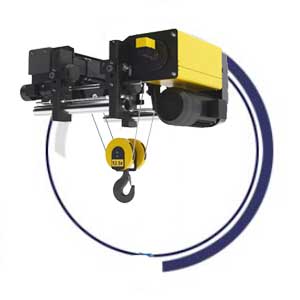
European Style Electric Hoist
The jib hoists are applicable for various types of single girder overhead travelling crane, single beam crane, H beam crane, I beam crane, monorail crane, and other types of single girder cranes, etc.
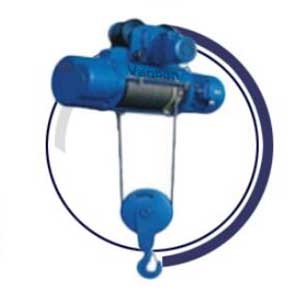
Chinese Style Electric Wire Rope Hoist
The Chinese type jib hoists are applicable for various types of single girder overhead travelling crane, single beam crane, H beam crane, I beam crane, monorail crane, and other types of single girder cranes, etc.
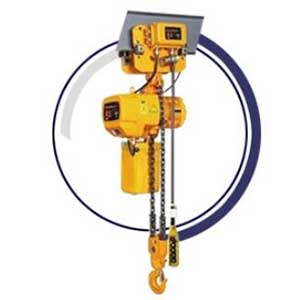
Electric Trolley Electric Chain Hoist
Types of jib crane hoist designes are available for your single girder overhead travelling crane. Contact us to get your overhead crane design and good overhead crane price.
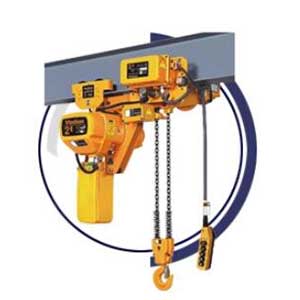
Low Headroom Electric Chain Hoist
Types of jib crane hoist designes are available for your single girder overhead travelling crane. Contact us to get your overhead crane design and good overhead crane price.
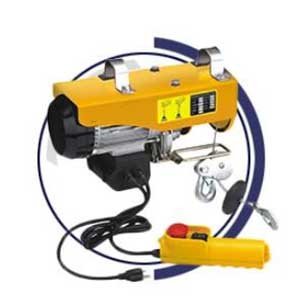
Mini small electric chain hoist with single phase
Mini electric wire ropes hoists - fixed hoist design & electric trolley type- 0.2 ton- 1 ton mini rope lift, single phase mini electric hoists, cheap small hoist for sale.
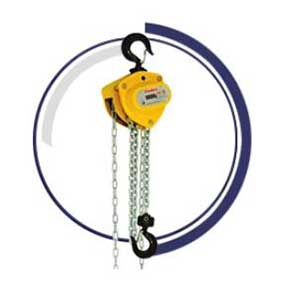
Manual and hand chain hoist & chain block
Manual chain block & manual chain hoist for sale. Light,economical & handy manual hoists & hand hoists of 250kg, 1 ton, 1.5 ton , 2 ton , 3 ton , 4 ton , 5 ton , 6 ton,etc.



